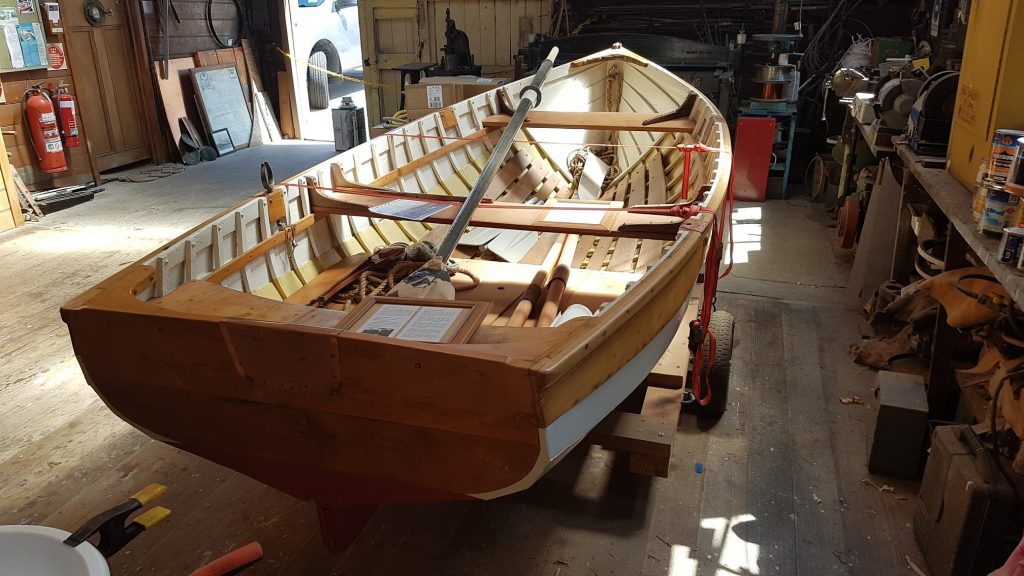
Reg Fazackerley was a prolific boat builder throughout the 20th century. He built vessels that were well crafted and very safe on the water. They were and still are prestigious items of maritime heritage.
TYPES OF VESSELS
It is estimated that Reg built well over one hundred vessels of a variety of sizes and design from large coastal traders to V bottomed plywood dinghies but he specialised in clinker or lapstrake dinghies. Reg built vessels to order, particularly for Christmas and Father’s Day presents. He also completed orders for organisations such as the Hobart Marine Board or for raffling at the Royal Hobart or Sandy Bay regattas.
HOW TO BUILD A FAZACKERLEY
Fazackerley vessels were usually built in the shed at the back of Reg’s home in Sandy Bay or next to the family holiday shack at Randall’s Bay. On average it took two weeks to build a dinghy from laying down the keel to the final coat of paint or varnish.
There was a tried and tested method to building the vessels, only with hand tools and construction was done by eye. To begin, Reg created a backbone for the vessel by joining the bow stem and stern posts to the keel. The next step was to form the hull with boiled or steamed planks overlapped in the clinker style. The planks were temporarily held in place by wooden clamps before being clenched into position with copper nails. Nails above the thwart riser were finished with copper roves, similar to riveting.
Next the boat was reinforced with an internal framework of ribs, risers and knees. Thwarts (seats) were added along with rowlocks for the oars. Finally the dinghy was painted either white to the waterline and then varnished or the entire vessel was varnished with a rope around the gunwale.
Although Reg was the head boat builder, many of the Fazackerley family members helped out. Small children’s fingers did the putty work inside the dinghy and Reg’s best friend and son-in-law, Gus Sage, helped with the two-man job of clenching the copper nails through the planks.
THE MATERIALS
The Huon and King Billy pine for the planks came from Williams on Argyle St (North Hobart) and grown oak knees from Garden Island in the Huon Channel near the township of Eggs and Bacon Bay. These knees were collected on Fazackerley family bush walks or fishing trips and allowed to dry out for twelve months before being used in a boat.
COLLECTIBLE CLASSICS
Due to the superior materials and construction of Fazackerley dinghies, they are currently very collectible vessels and prestigious items of Tasmanian maritime heritage. They had elegant lines and were very heavy and very safe. His designs were copied by many so collectors should be aware of imitations claiming to be the real thing.
HOW TO IDENTIFY A FAZACKERLEY
King Billy or Huon Pine planks
Grown Oak knees
No ribs forward of the front thwart
A distinct ‘tumble home’ transom design
Clenched copper nails below the thwart riser, roved copper nails above
The initials R.F. punched or chiseled under one of the thwarts often with the year of construction
(Reproduced from a reference published by the Maritime Museum of Tasmania)